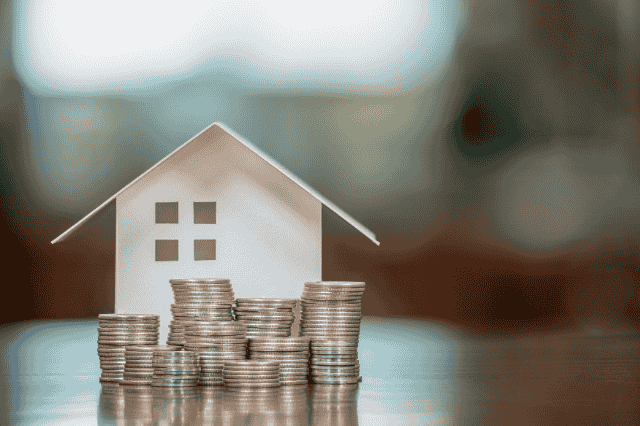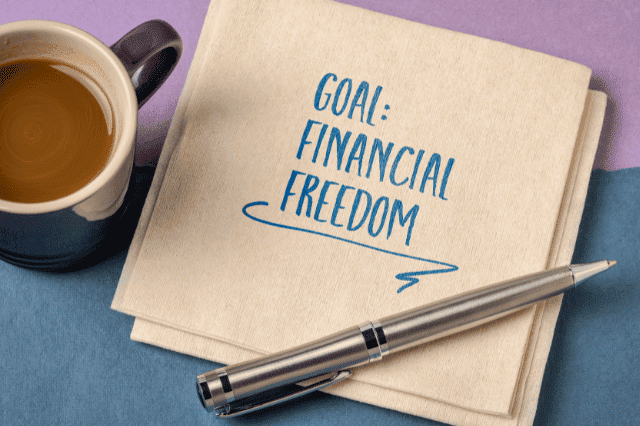Building equity in your home is a great way to improve your financial stability. But what exactly is home equity, and why does it matter so much?
Equity in your home not only gives you a sense of ownership, but it also opens up doors to financial opportunities such as refinancing, accessing home equity loans, or even selling your home for a profit. The good news? You don’t have to wait decades to build a large amount of equity. By taking early steps, you can speed up your equity growth, lower loan stress, and get a handle on your finances sooner.
In this guide, we’ll break down the strategies that can help you build equity in your home faster, why it’s important, and how it can reduce your overall financial burden.
What is Home Equity?
Home equity is how much of your home you actually own after subtracting what you owe on your loan. The more equity you have, the stronger your finances.
How Home Equity Works
Imagine your home is valued at $600,000, and your mortgage balance is $400,000. Your equity is:
Home Value ($600,000) – Mortgage Balance ($400,000) = Home Equity ($200,000)
Over time, this equity can grow in two main ways:
- Paying Down Your Loan Balance: Each time you make a mortgage payment, part of it goes toward reducing the principal (the amount you owe).
- Property Value Increases: If the real estate market rises, your property value may grow. For example, if your home’s value rises to $650,000 while your loan balance falls to $350,000, your equity will grow by a large amount.
Home Equity vs. Loan-to-Value Ratio (LVR)
Lenders often evaluate equity through the lens of your loan-to-value ratio (LVR). This measures the loan amount as a percentage of your property’s value.
- Example: A $300,000 mortgage on a $400,000 home equals a 75% LVR.
- Lower LVR means higher equity, which makes you a less risky borrower to lenders.
Building equity is essential not just for financial security but for maximising options like better refinancing deals or accessing funds for major expenses.
Why Should You Build Equity Faster?
Building equity faster doesn’t just offer peace of mind—it opens up a world of financial flexibility. Let’s explore the key benefits:
Access to Better Refinancing Options
Building equity reduces your loan-to-value ratio (LVR), which lenders see as less risky. This opens the door to better refinancing options, such as lower interest rates that can save you thousands over your loan’s life. Additionally, reaching at least 20% equity often eliminates Lender’s Mortgage Insurance (LMI), a significant cost for borrowers with low deposits.
For example, if your home is worth $600,000 and you owe $450,000, your loan-to-value ratio (LVR) is 75%. Lenders offer better rates to people with lower LVRs than those with higher ones. The faster you build equity, the sooner you can access these benefits.
2. A Financial Safety Net for Emergencies
Home equity isn’t just a number—it can help you in tough times when you need extra money. You can use a home equity loan or a HELOC to borrow money for things like medical bills, home repairs, or paying off high-interest debt.
For example, a home equity loan gives you a set amount of money, while a HELOC lets you borrow money as you need it. Both options usually have much lower interest rates compared to credit cards or personal loans. However, while these tools can provide valuable support, it’s essential to borrow responsibly to avoid overextending yourself.
3. Easier Transition to Your Next Home
If you plan to sell your home, having more equity means you’ll get more money from the sale. A higher equity position means larger profit margins after paying off your mortgage, leaving you with more cash to use for your next home. Additionally, a bigger deposit can reduce the size of your next loan, helping you avoid paying LMI and lowering your financial burden.
For instance, if you sell your home for $700,000 and owe $300,000, the remaining $400,000 becomes a significant deposit for your next property. This larger deposit not only improves your loan terms but also makes the transition between properties smoother.
4. Avoiding Lender’s Mortgage Insurance (LMI)
Lender’s Mortgage Insurance (LMI) is a fee charged when your equity is below 20%. For buyers and those refinancing, building equity to reach the 20% threshold not only eliminates this cost but strengthens your financial position. For example, on a $500,000 loan, LMI can range from $8,000 to $15,000. Proactive strategies like lump-sum payments or increased repayments can help you avoid this expense while accelerating equity growth.
5. Reduced Loan Stress and Greater Stability
Building equity faster not only helps your finances but also makes managing your mortgage less stressful. As your equity grows, your loan gets smaller, and you get closer to fully owning your home. This reduced debt burden can make a significant difference to your overall financial well-being.
Additionally, equity acts as a safety buffer during uncertain times. If property values drop, having strong equity ensures you won’t owe more than your home’s worth, preventing you from being “underwater” on your mortgage. For example, if your home’s value falls from $600,000 to $550,000 but your mortgage balance is only $400,000, you still have $150,000 in equity—a vital cushion against market fluctuations.
Beyond that, paying off your mortgage faster frees up your finances, allowing you to focus on long-term goals like saving for retirement, investing, or pursuing other aspirations.
Strategies to Build Equity Faster
Now that you understand why equity matters, let’s explore six proven methods to help you build equity faster.
1. Increase Your Mortgage Repayments
One of the easiest ways to speed up equity growth is by increasing your mortgage repayments. Even small adjustments, such as making additional repayments or switching to fortnightly payments, can have a significant impact.
For instance, paying every two weeks instead of once a month means you make one extra payment each year. Adding just $200 more each month on a $400,000 loan at 4% interest could save $60,000 and cut six years off your loan.
Check with your lender about any restrictions or fees for extra payments to ensure you can maximise this strategy.
2. Consider a Larger Deposit (For New Buyers)
For those purchasing a new home, starting with a larger deposit is a surefire way to build instant equity. A deposit of at least 20% when buying a home can avoid paying LMI, which saves you thousands.
For example, on a $500,000 property, a 20% deposit ($100,000) leaves you with a $400,000 loan, while a 10% deposit ($50,000) increases your mortgage to $450,000 and incurs LMI. Beginning with stronger equity ensures lower monthly repayments, reduced interest costs, and a healthier financial foundation.
3. Make Lump-Sum Payments
Using extra money, such as tax refunds, work bonuses, or inheritances, to make one-time payments on your loan is another effective way to build equity faster.
For instance, a $10,000 lump sum on a $400,000 mortgage can save you over $20,000 in interest and reduce your loan term by almost two years. Some lenders also offer redraw facilities, allowing you to access these extra funds in emergencies if needed.
Prioritise lump-sum payments after addressing high-interest debts, such as credit cards or personal loans, to make the most of your financial resources.
4. Invest in Smart Renovations
Well-chosen renovations can greatly increase your property’s value, directly improving your equity. Spend money on upgrades that add the most value, like fixing up your kitchen, bathroom, or yard.
For example, modernising appliances, adding storage, or updating countertops can provide a noticeable value boost. However, be careful not to spend more on renovations than they add to your home’s value. Research property market trends and set a realistic budget to ensure you get a good return.
5. Avoid Refinancing with Minimal Equity
Before refinancing, aim to build at least 20% equity to avoid resetting your progress or incurring costs like Lender’s Mortgage Insurance (LMI). Focus on reducing your loan-to-value ratio (LVR) through extra repayments or lump-sum contributions. While cash-out refinancing can be helpful for essential expenses like home repairs, use it cautiously to protect your equity and prevent extending your loan term unnecessarily.
6. Protect Your Property Value
Maintaining or improving your home is key to growing its value. Fix leaks, repaint, and replace worn-out items to keep it in good shape. Small updates like energy-efficient appliances or modern fixtures can make your home more attractive. Also, watching property market trends can help you choose upgrades that buyers want and that add real value.
How Long Does It Take to Build Equity?
The time it takes to build equity depends on factors. Shorter loan terms, such as 15-year mortgages, help you build equity faster compared to 30-year loans because more of your repayments go toward the principal.
Similarly, switching to fortnightly payments can add an extra full payment each year, cutting down your loan term considerably. Additionally, rising property values in a strong real estate market can naturally increase your equity.
While it typically takes 5–7 years to build meaningful equity, proactive strategies like extra repayments and lump-sum contributions can dramatically speed up the process.
Making the Most of Your Home Equity
Building equity in your home faster is one of the best wealth-building financial decisions you can make. By increasing repayments, making lump-sum contributions, and investing in high-ROI renovations, you can reduce loan stress, access better financial opportunities, and achieve long-term stability.
Take the first step toward a stronger financial future—reach out today for friendly advice and personalised support.



